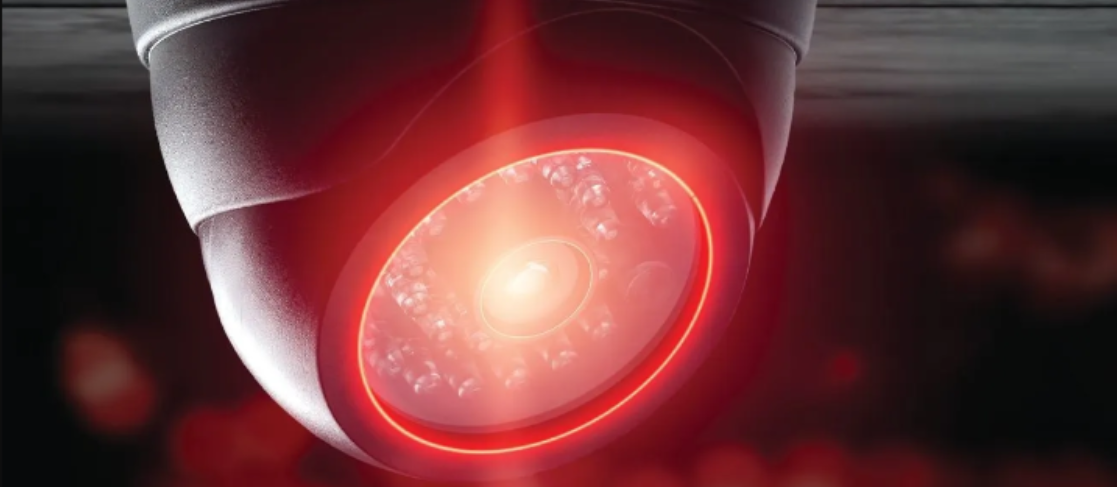The 5 Senses
What they say about your facility

Customer experience begins the moment people step foot on a property, and it continues with every stride they take and every room they enter. Does the space look pristine or dirty? Does it smell fresh or pungent? Are surfaces smooth or sticky?
Sight. Smell. Sound. Touch. Taste.
These five senses kick into high gear and form immediate impressions that affect how visitors and occupants feel about, and act toward, an organization.
They impact how productive occupants and visitors are while on site. Whether they will recommend a company or university to potential employees, partners, shoppers or students. Whether they will happily return to the facility, minimize the time they spend there or, if they can, avoid it all together.
It is critical for facility managers to pay attention to how they impact all five senses and make each of the experiences a positive one.
Sight: The eyes don’t lie
What people see is incredibly important. When the first things they notice are manicured lawns and bushes with seasonal color, clean glass, and well-lit and shiny lobbies, people feel safe, comfortable and happy. Unkempt grounds, messy cafes and bathrooms produce a decisively negative effect.
For FM teams, attention to detail is critical when it comes to sight. A lot of little things can add up to create a positive or a negative impression. One piece of trash on the floor may go unnoticed, but four or five will not. Smudges on a glass door may be forgiven, but not if it is followed by crumbled papers on tabletops or spilling out of trash bins.
The impact a facility’s appearance can have on occupants is significant. For instance, one study found that in offices where employees thought cleanliness was lacking, 72 percent said their surroundings made them less productive. Nearly half (46 percent) took longer lunch breaks and spent less time in the office, and a quarter said they took sick leave because their surroundings were depressing.
On the other hand, fresh flowers and healthy potted plants placed through the building, orderly lobbies and water fountain filters with green lights instead of red ones, demonstrate that the team is attentive to even the smallest details.
It is also important to remember people are inclined to conform to the behavior of those around them. If occupants regularly see FM team members adhering to high standards – mopping spills right away, picking up a lone piece of trash or straightening out a chair as they pass through a room – they will be more likely to do their part in keeping the building clean. In kitchenettes, they will wipe up their coffee grinds and put away dishes. In lobbies, they will swipe their feet on entrance mats before tracking mud through the room.
Ensure the team adheres to these standards:
-
Communicate regularly so they understand what customers expect in terms of cleanliness.
-
Discuss how to best interact with occupants and visitors, including how to listen and react to feedback and complaints so people feel their presence in a positive way.
-
Encourage them to take their jobs personally, to care about the smallest details, and recognize and reward them when they do.
-
Adjust cleaning schedules based on occupancy and traffic, focusing on high-touch areas and restrooms.
-
Conduct cleaning inspections and review reports regularly.
-
Provide staff with appropriate cleaning tools. For instance, many elevators do not have electrical outlets inside. Consider arming staff with battery-powered vacuums so they do not have to worry about locked or propped-open elevator doors closing on them.
Smell: Keep it fresh
Some people may be able to look in another direction if they do not like what they see, but smells are a different story. The only way to avoid them is to leave the area – and that is not always possible. Too often, buildings smell stale or musty, or worse, they overpower occupants with the scent of cleaning products and air freshener – the latter of which is a sure sign of trying to cover up an odor or a poor cleaning job.
FM teams should aim for the highest air quality with a fresh-smelling environment that is free of pollutants. One that is natural and pleasant. Frequent cleaning is key, as are well-maintained HVAC equipment, the use of MERV 13 filters and frequent fresh air exchanges.
Smell is particularly important when it comes to bathrooms. Not surprisingly, in one study 77 percent of respondents said it is the first thing they notice when they walk into a bathroom. In men’s restrooms, urinal cakes are one of the biggest culprits. Custodial staff sometimes pile them up to mask the smell, but the high-perfume scent can be overwhelming. If bathrooms are cleaned regularly, there is no need for them.
Other areas where smell can be an issue are custodial closets. If used supplies and buckets of dirty water are stored there, their smells can seep into the hallway. In older buildings, sewer smells can also come up through custodial closets and other rooms. Preventive maintenance – such as adding water into the sewer traps and ensuring appropriate air filtration systems are in place – can help contain and eliminate these odors.
Proper maintenance also goes a long way toward passing the café sniff test. Nobody wants a cafeteria that smells like grease or a break room and surrounding office space that smells like the lunches people have been heating up in microwave ovens. Make sure kitchen equipment, filters and ducts are maintained so the mechanicals do not break down, air circulates and smells can be whisked away.
Sound: Quiet is best
People are in a building for a purpose, whether working, holding meetings, studying or shopping. Noise gets in the way of these activities. A Radius Global Market Research study showed that noise negatively impacts concentration levels, productivity and creativity for 69% of employees.
It is the FM team’s responsibility to provide spaces that are free of distractions so occupants can focus on their task at hand. This means making sure ceiling air vents do not rattle, equipment does not clang, vacuums are not humming and hammers are not banging away.
FM teams should think of themselves as guests in their occupants’ environment, where respect for their audio privacy is paramount. Off-hour cleaning is a good way to help deliver a distraction-free environment. When that is not possible, and cleaning and repairs need to be done in occupied areas, make every effort to notify occupants in advance and accommodate their needs.
Alarms are another big source of noise pollution. Preventive maintenance can help minimize the chances of alarms going off. Proactively look for signs of failing electrical equipment. Take regular readings during daily rounds to identify potential issues and schedule fixes before they become problems.
Touch: Smooth is serene
Nothing says “yuck” more than touching an elevator button, desk or countertop and coming away with a sticky, dirty substance on your fingers. Not only does it repel people, it can make them feel uncomfortable in your facility, sometimes to the point of avoiding certain areas. Frequent and proactive cleaning and dusting are a must, because trying to catch up after the fact will only leave teams falling behind.
COVID-19 made people ultra-aware of keeping surfaces clean. Custodial organizations are using high-level disinfectants on high-touch areas. While this is good for maintaining healthy environments, it can also create residue that feels strange to the touch. To avoid this, follow-up the disinfectant with another lower-level one that smooths out the surface and feels clean.
To alleviate concerns and help people to feel more comfortable, particularly as they return to offices, shops, entertainment facilities and colleges, keep hand wipes at the ready. Have them available at building and room entrances so people can grab and wipe door handles, buttons, café tables and other surfaces.
Another way to comfort commercial space occupants is to put door hangers on every office door that say “Please Disinfect” on one side, and “Office is Clean” on the other. Employees leaving the room can flip it to the disinfect side. When they return, they will see “Office is Clean” and feel better using the area.
Taste: Literal & metaphorical
People are very particular about their food and want the food to taste like they expect – not like the equipment it was cooked in, the smell lingering in the air or the last dish that was heated in microwave.
Properly maintained equipment, including air exchanges, are important here. Recycling fresh air pulls out occupant-generated smells that can affect how food tastes. Improper or infrequent cleaning of food preparation and storage equipment can also affect how food tastes. Paying attention to the use of food areas makes a difference in the overall daily experience.
When people visit a facility, their senses will give them a gut feel about how they perceive an organization. And metaphorically speaking, FMs do not want them to leave with a bad taste in their mouth.
By keeping customers’ senses top of mind, FM teams can give occupants an experience that keeps them coming back, working productively and enjoying their environment.

John Harris is the director of facilities management atUG2. He is a highly accomplished FM leader with more than 20 years of industry expertise. He has extensive experience overseeing facilities and campuses, and ensuring pristine and healthy environments for employees, tenants, visitors, staff and students. Prior to UG2, Harris served in general manager and director of facilities positions for Sodexo, where he was responsible for the operation of maintenance, custodial, grounds, transportation and life safety functions.
Read more on Operations & Maintenance , Real Estate and Occupancy & Human Factors
Explore All FMJ Topics









